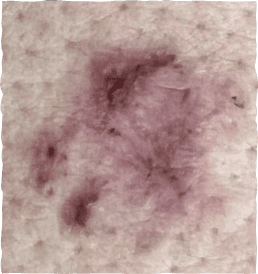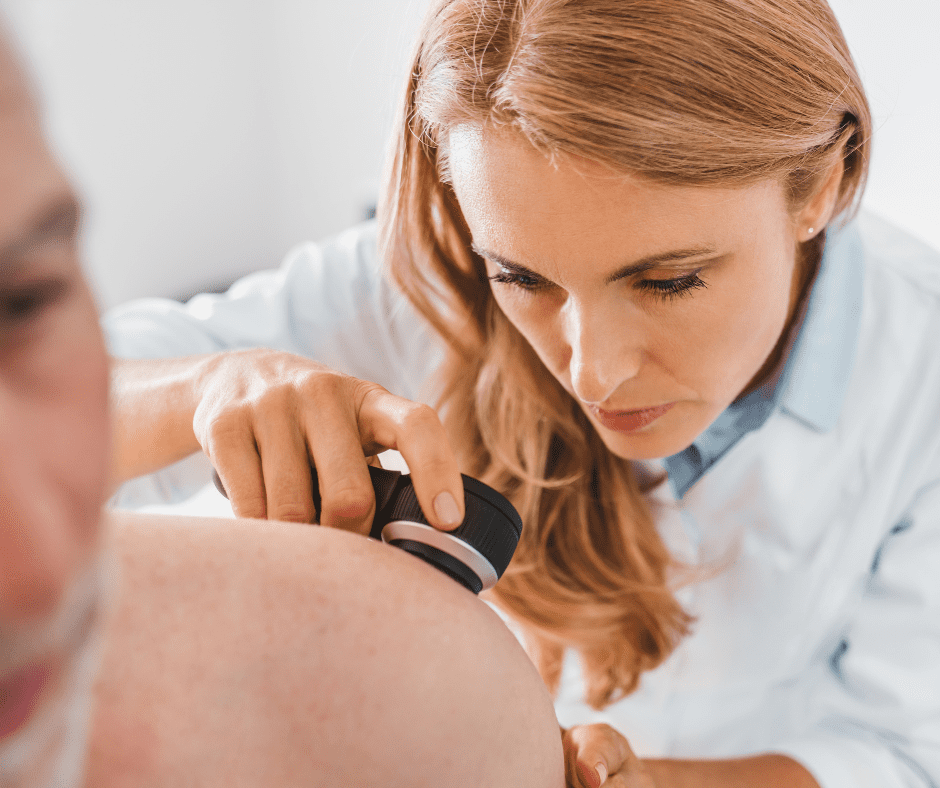My Personal Skin Cancer Journey and the Crucial Role of Self Advocacy
By Anita J. Winkler, DO, MPH, MRO
Skin cancer is the most common form of cancer in the United States. Whether you’re a sun worshipper or diligently shield yourself from harmful UV rays, the potential for developing skin cancer is high.
Each day, more than 9,500 individuals are diagnosed with skin cancer, and one in five Americans is projected to experience skin cancer in their lifetime. Despite these alarming statistics, many people overlook regular skin cancer screenings, potentially missing early signs of the disease.
Regrettably, I was one of those individuals.
My Skin Cancer Story

It’s important to clarify that I had no significant prior medical history, no prior skin issues, and no family history of skin cancer. My healthcare provider didn’t express major concerns due to the small size of the lesion and offered several options: a watch-and-wait approach, a biopsy, or complete excision of the lesion. I opted to have it excised and sent to pathology for further analysis. The primary concern with any such lesion is the possibility of cancer.
Types of Skin Cancer
Waiting for a diagnosis isn’t easy. But I used the time to educate myself further about my possible biopsy result.
A skin cancer diagnosis falls into one of three categories: squamous cell carcinoma, basal cell carcinoma, or malignant melanoma.
Squamous Cell Carcinoma Explained
Cutaneous squamous cell carcinoma is a malignant tumor that starts in the upper part of the epidermis. It represents 20% of all skin cancers, resulting in one million cases in the U.S. per year. These cancers are common in sun-exposed areas of the body such as the arms, face, ears, neck, lips, and hands. A skin biopsy is required to confirm the diagnosis. Biopsies also provide information that is useful for staging and management.

Picture of squamous cell carcinoma
Basal Cell Carcinoma Explained
Basal cell carcinoma or basal cell skin cancer is the most common form of skin cancer. These lesions start in the lower part of the epidermis and grow slowly. Basal cell cancer can spread to nearby areas of the body including the skin and bone.

Picture of basal cell carcinoma
Melanoma Explained
Most skin cancers, like basal cell and squamous cell carcinomas, are highly curable, however, melanoma (the fifth most common form of cancer in the U.S.) is a more problematic diagnosis. Melanoma rates have been rising rapidly over the past few decades. Melanoma will kill nearly 9,000 people this year.
Survival rates for people with melanoma depend on the stage of the disease. Therefore, early diagnosis is crucial to improving patient outcomes and saving lives.

Picture of melanoma carcinoma
Diagnosis
A skin cancer diagnosis requires a skin biopsy. A dermatologist will remove any suspicious lesion and send it to a pathology lab for microscopic examination and diagnosis.
Below are the results of my pathology report. My suspicions were right: I had skin cancer.

Skin cancer treatment options (H3)
Since my pathology report indicated the peripheral margins of the tissue sample were not clear, further treatment was required. At this point, I had several options, both surgical and non-surgical (encompassing topical treatments, such as fluorouracil cream or radiation therapy). To reduce the risk of recurrence, I underwent surgical excision with wider margins combined with regular clinical follow-up.
Lessons Learned
The importance of regular skin cancer checks should not be understated. Whether you live in Florida or Wisconsin, check your skin at least once a month, starting at the bottom and working your way up, just as you would if you were looking for ticks.
If you observe anything suspicious, follow these steps:
- Book an appointment with your primary care provider.
- Educate yourself about skin cancer (it’s ok to consult “Dr. Google,” physicians prefer it if you come prepared).
- Write a list of questions and bring them to your appointment.
- Take an active role and be your own advocate in this process. Build a strong relationship with your healthcare provider. It’s a partnership, and your active participation is vital for rapid diagnosis and the right treatment.
- Take time to heal. If caught early, skin cancer can be treated successfully. But biopsy wounds and cancer removal can be painful. Follow your doctor’s post-care instructions and don’t skip any post-operative follow-up appointments.
And remember, it’s okay to have feelings. Skin cancer touches the lives of thousands of Americans each year, and a diagnosis can come as a shock. Even as a medical professional, I had many emotions and questioned how I hadn’t spotted my skin cancer sooner.
Make Every Month Skin Cancer Awareness Month
Skin cancer holds personal significance for me, and it should for you as well. You don’t have to become an expert in skin cancer; you need to become an expert on yourself. If you notice any unusual changes that don’t seem like “you,” get them checked out.
Here at Acuity International, we consistently promote this proactive approach to healthcare. Our commitment extends to safeguarding the health and welfare of our clients’ employees as well as our own team. When our occupational health providers and examiners identify any concerning issues, we ensure every individual receives the necessary medical attention.
Though October is designated as Cancer Awareness Month, the reality is that cancer doesn’t follow a seasonal calendar, and skin cancer can occur at any time of the year (yes, even in the winter). Don’t be caught off guard or risk a late-stage diagnosis. Let’s make every month a time to raise awareness about skin cancer.
Resources:
About Anita J. Winkler, DO, MPH, MRO
As Occupational Health Services (OHS) Chief Medical Officer (CMO) with Acuity International, Anita provides physician leadership and representation, as well as oversight for all medical review physicians and consultants, ensuring operational support for over fifty contract medical exam programs.
Anita holds over 20 years of Active-Duty military medical experience, having served in roles such as Medical Commander, Chief of the Medical Staff, Chief of Aerospace Medicine, and Public Health Emergency Officer. She joined Acuity via the acquisition of Comprehensive Health Services, where she served as Associate Medical Director.
Anita holds a Doctor of Osteopathic Medicine degree from Nova Southeastern University College of Osteopathic Medicine, a master’s degree in Public Health from United States Air Force School of Aerospace Medicine, and a Bachelor of Science degree in Nursing from Auburn University. She is board-certified by the American Board of Preventive Medicine and by the American Osteopathic Board of Family Physicians for Family Medicine.
